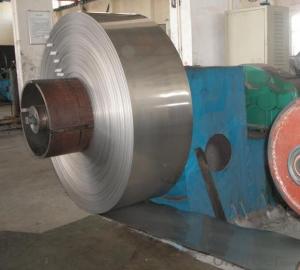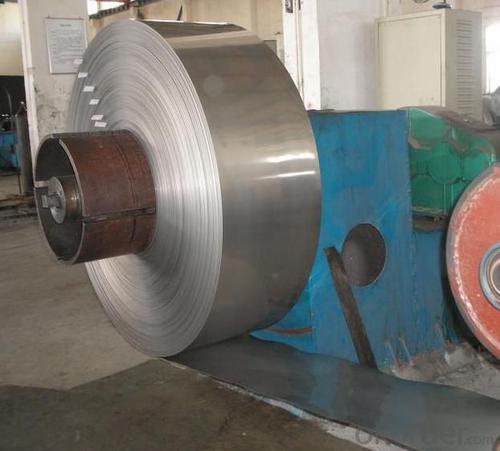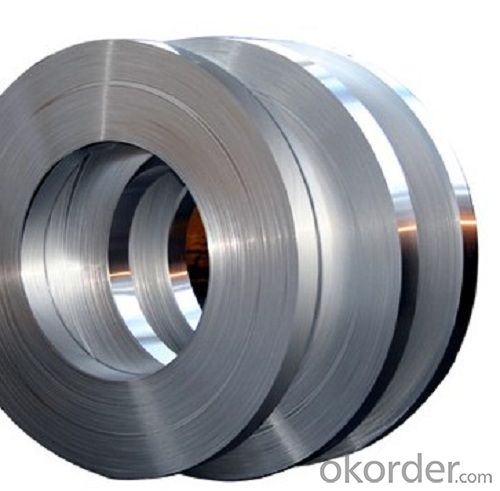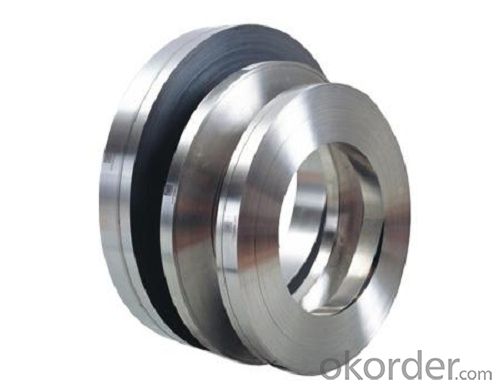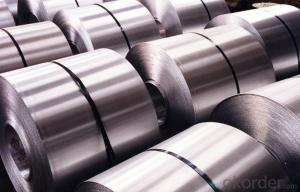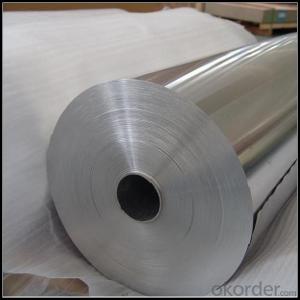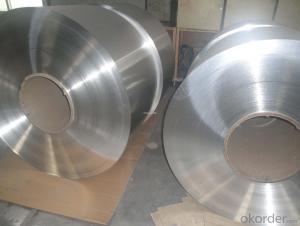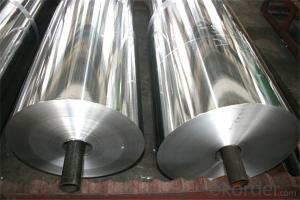Anodized Aluminum Coil for Aluminium and Plastic Pipe Strips
- Loading Port:
- Shanghai
- Payment Terms:
- TT OR LC
- Min Order Qty:
- 2.5
- Supply Capability:
- 5000 m.t./month
OKorder Service Pledge
OKorder Financial Service
You Might Also Like
Specification
Aluminium Strips for Aluminium and Plastic Pipe
l Product Specification
1. Commodity: Aluminium Strips for Aluminium and Plastic Pipe
2. Alloy No.: 1100, 1050, 1060, 1070, 1235, 1200, 1145, 3003, 3003-2, 491, 5052, 5083, 6061, 8011
3. Size:
Thickness: 0.21-5.0mm(Tolerance:+/-0.02mm)
Width:20-1600mm(Tolerance:+/-1mm)
Length:230-5000mm(Tolerance:+/-1mm)
4. Application:
1) air plane, refrigerators ,audio equipment
2) building material: ceilings, walls
3) telephones, digital cameras
4) plastic composite board, aluminum and plastic pipe
5. Payment:L/C at sight or T/T
6. Delivery time:15 days after received your pre-payment.
7. Package:
In standard sea worthy wooden pallet and covering with brown paper and PVC inside.
8. Month Capacity: 5000 MT/Month
9.Certificate:SGS, ISO9001:2000; ISO1400:2004
l Packaging & Delivery
Packaging detail: Seaworthy Export Standard Wooden Pallet and with damp proof film as first layer, Kraft paper as second layer, Cardboard card as third layer Criss-cross steel strip to fix outside
Delivery detail: About 15 days

l Company Profile
CNBM International Corporation, China National Building Materials (Group) Corporation, is one of the largest companies in China building material & equipment industry, with 42,800 employees and sales in 2005 of US Dollar 4.395 billion. In 2006, China National Building Material Company Limited was listed on Hong Kong Stock Market with the stock code as 3323. |
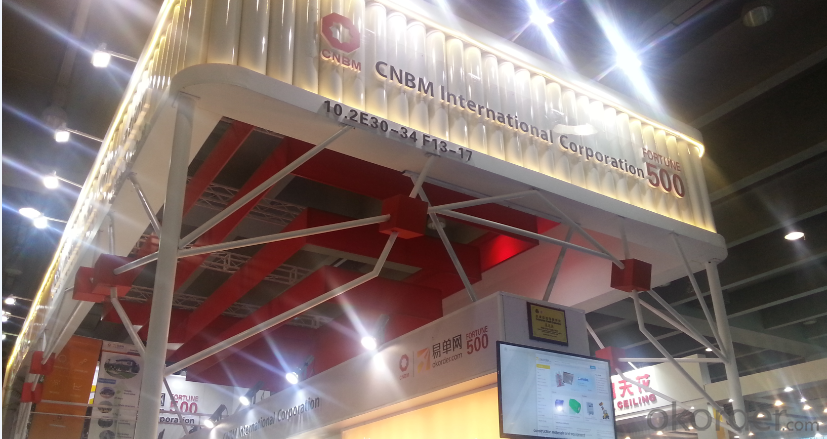
l CNBM World Wide
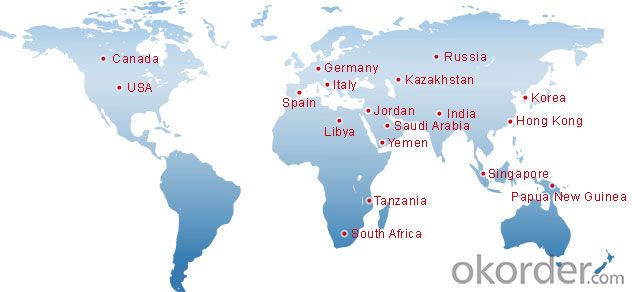
l Products Images
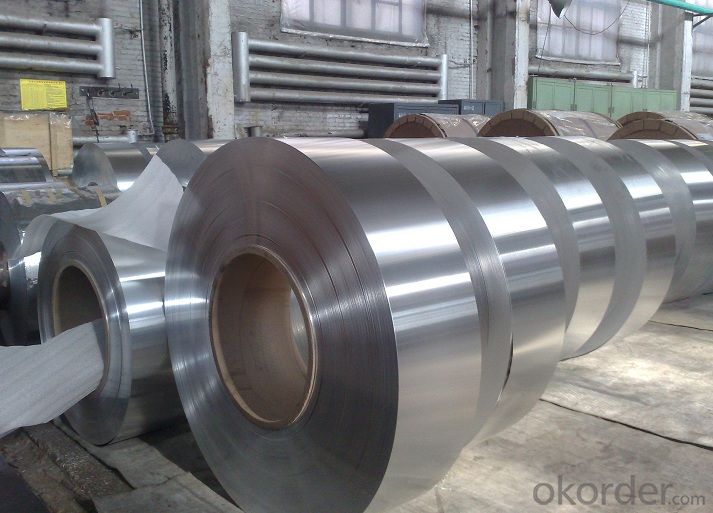

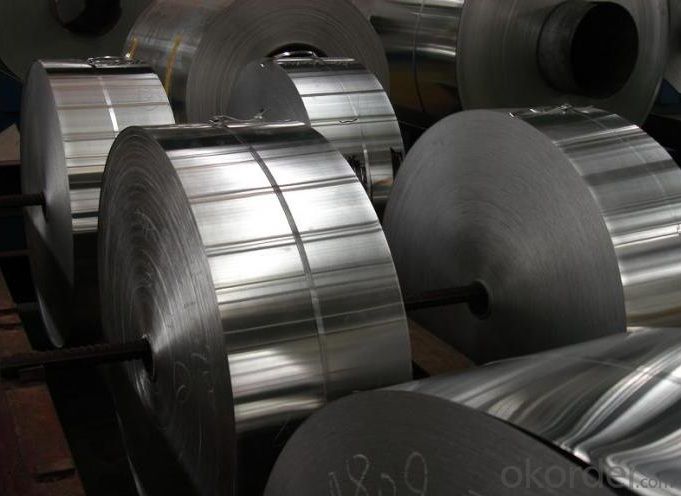
l Certificates
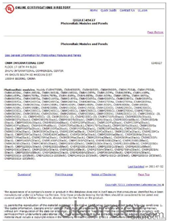
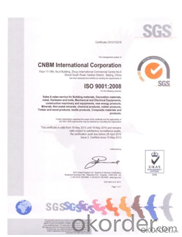
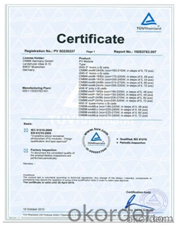
l FAQ
Q: Do you provide free samples?
A: Yes, free samples will be sent to you on freight at destination.
Q: Can I get your latest products catalogue?
A: Yes, it will be sent to you in no time.
Q: What is the MOQ?
A: 2.5 tons
Q: What are your payment terms?
A: We accept L/C, T/T
- Q: Are there any specific guidelines for handling and storing aluminum coils in warehouses?
- Yes, there are specific guidelines for handling and storing aluminum coils in warehouses. These guidelines aim to ensure the safety of workers and the integrity of the coils. Here are some key points to consider: 1. Handling: When moving aluminum coils, it is important to use appropriate lifting equipment such as cranes or forklifts with proper attachments to prevent damage. Avoid dragging or dropping the coils, as this can cause deformation or scratching. 2. Storage location: Choose a well-ventilated, dry, and clean area for storing aluminum coils. The storage area should be away from direct sunlight, heat sources, and any chemicals that could react with aluminum. Maintaining a consistent temperature and humidity level is crucial to prevent corrosion or other damage. 3. Stacking: When stacking aluminum coils, use suitable dunnage material such as wooden blocks or rubber mats between each coil to prevent direct contact. This helps to avoid scratches, dents, or other physical damage. Additionally, avoid excessive stacking height to prevent coil deformation or collapse. 4. Handling precautions: Always wear appropriate personal protective equipment (PPE) such as gloves and safety shoes when handling aluminum coils. This protects against potential injuries from sharp edges or falling objects. 5. Labeling: Clearly label each coil with important information such as weight, dimensions, alloy type, and any special handling instructions. This ensures proper identification and helps prevent mishandling or confusion. 6. Regular inspections: Conduct regular inspections of stored aluminum coils to check for any signs of damage or corrosion. If any issues are identified, take appropriate action promptly to prevent further damage. 7. Security measures: Implement security measures to prevent unauthorized access to the storage area. This helps protect the coils from theft or vandalism. It is important to note that specific guidelines may vary depending on the type and size of the aluminum coils, as well as local regulations and industry standards. It is recommended to consult the manufacturer's instructions or seek professional advice to ensure compliance with the appropriate handling and storage guidelines.
- Q: I have a broken exhaust stud in my engine head. I have an aluminum head but the stud is steel. The stud broke a little below the surface. I want to mig weld a washer to the stud, but will the weld stick to the aluminum or will it blow a big hole in the head? I will only be using a little 110 mig welder.will I be okay or will that lead to more problems?
- A 110 volt mig might not get hot enough to fuse to the broken stud but you are on the right track. The heat from welding will loosen the stud slightly sometimes enough to back it out with a sharp tool or slot cut in the broken piece. I have removed many broken bolts and studs in aluminum that were deep in the head with tig, by welding a dab of weld at a time and keep building it up till I could grab it with a pair of pliers. It requires precision welding skills but can be done. You might try it with the mig but you must not allow the arc to touch the aluminum. If you weld the washer to it make sure that the washer is not plated it will create more problems for you (health related). Good luck!
- Q: What is the average lifespan of aluminum coils?
- The average lifespan of aluminum coils can vary depending on various factors such as the quality of the aluminum, the environment it is exposed to, and how well it is maintained. However, on average, aluminum coils can have a lifespan of around 15 to 20 years. With proper installation, regular cleaning, and maintenance, aluminum coils can last even longer. It is important to note that regular inspections and upkeep are crucial in prolonging the lifespan of aluminum coils and ensuring optimal performance.
- Q: Can aluminum coils be used in the production of heat exchangers?
- Yes, aluminum coils can be used in the production of heat exchangers. Aluminum is a popular choice for heat exchangers due to its excellent thermal conductivity, which allows for efficient heat transfer. Additionally, aluminum is lightweight and corrosion-resistant, making it a durable and long-lasting option for heat exchanger applications. The use of aluminum coils in heat exchangers is common in various industries, including HVAC, refrigeration, automotive, and aerospace.
- Q: What are the regulations and standards governing the production of aluminum coils?
- Various regulations and standards are in place to govern the production of aluminum coils, ensuring product quality, safety, and environmental sustainability. These regulations may vary depending on the country or region, but there are common industry standards that are widely recognized. One primary regulation that governs the production of aluminum coils relates to product quality and specifications. Organizations such as the American Society for Testing and Materials (ASTM) or the International Organization for Standardization (ISO) set specific standards that aluminum coils must meet. These standards define the physical and chemical properties that the coils must possess, such as thickness, width, tensile strength, and chemical composition. Safety regulations are also in place to protect workers and facilities involved in the production process. For example, the Occupational Safety and Health Administration (OSHA) outlines safety measures and requirements to prevent accidents and ensure safe working conditions. This includes guidelines for handling and storing aluminum coils, personal protective equipment requirements, and emergency response protocols. The production of aluminum coils is also subject to environmental regulations that aim to minimize its impact on the environment and promote sustainable practices. These regulations may include guidelines for waste treatment and disposal, the use of energy-efficient equipment, and the reduction of greenhouse gas emissions. Industry-specific organizations, such as the Aluminum Association in the United States or the European Aluminium Association in Europe, also establish voluntary standards and best practices for aluminum coil production. They collaborate with manufacturers to develop guidelines for quality control, sustainability, and continuous improvement in the industry. Overall, compliance with these regulations and standards ensures the production of high-quality aluminum coils that meet customer requirements and contribute to a sustainable and responsible industry.
- Q: What are the rules and regulations concerning the disposal of old aluminum coils?
- <p>Yes, there are regulations on the disposal of old aluminum coils. These regulations vary by country and region, but generally, they aim to prevent environmental pollution and promote recycling. In the United States, for example, the Environmental Protection Agency (EPA) sets guidelines for recycling and disposing of scrap metal, including aluminum. Businesses and individuals are often required to recycle aluminum coils rather than sending them to landfills. Proper disposal may involve sorting, cleaning, and sending the coils to recycling facilities that can process and reuse the material. Violations of these regulations can result in fines and penalties. It's important to check local and national regulations for specific requirements.</p>
- Q: How are aluminum coils used in the production of cans and containers?
- Aluminum coils are of utmost importance in the manufacturing of cans and containers. Typically, these coils are created by continuously casting molten aluminum into thin sheets. Once cooled and solidified, the sheets are rolled into coils, which are then utilized in diverse manufacturing procedures. The initial step in utilizing aluminum coils for cans and containers involves the process of blanking. During this stage, a blanking press cuts the coil into individual circular blanks, which will eventually form the bottom and lid of the can. These blanks are meticulously cut to the required size and shape, guaranteeing precision and uniformity. Following that, the blanks are transported to a cupping press, where they are situated between a set of dies. High pressure is applied by the press, causing the blank to adopt the shape of a cup. This cup will eventually serve as the body of the can or container. The cup is then transferred to a redraw press, where it undergoes a series of operations aimed at enhancing its shape and dimensions. This process aids in achieving the desired thickness and height of the can or container. Moreover, the redraw press ensures that the cup maintains its structural integrity and can endure the challenges of storage and transportation. Once the cup has been redrawn, it is subjected to a trimming procedure to eliminate any excess material and achieve the final shape. This step guarantees that the can or container possesses a clean and smooth edge, ready for further processing. Subsequently, the cups are conveyed to a base-coating station. At this station, a thin layer of protective coating is applied to both the interior and exterior surfaces of the cups. This coating helps prevent corrosion and ensures that the contents of the can or container remain fresh and uncontaminated. Lastly, the coated cups pass through a necking press, where the upper section of the cup is shaped into a narrower neck. This neck is essential for attaching the lid or cap to the can or container, providing a secure seal. To sum up, aluminum coils play an essential role in the production of cans and containers. They are transformed into blanks, cups, and ultimately into the final product through a variety of manufacturing processes. These coils guarantee the durability, functionality, and integrity of cans and containers, making them suitable for a wide range of applications in industries such as food and beverages, pharmaceuticals, and cosmetics.
- Q: Can aluminum coils be coated with protective films?
- Yes, aluminum coils can be coated with protective films. These films are typically made of a variety of materials, such as polyester or polyethylene, and are applied to the aluminum coils using adhesive or heat bonding. The purpose of these protective films is to prevent damage, scratches, or corrosion to the surface of the aluminum coils during storage, transportation, or processing. The films act as a barrier, shielding the coils from external factors such as moisture, dirt, or chemicals. Additionally, certain protective films can also provide temporary UV protection. Overall, coating aluminum coils with protective films is a common practice in various industries to ensure the quality and integrity of the coils are maintained throughout their handling and use.
- Q: Can aluminum coils be used for automotive body panels?
- Yes, aluminum coils can be used for automotive body panels. In fact, aluminum is a popular choice for car manufacturers due to its lightweight and corrosion-resistant properties, leading to improved fuel efficiency and longevity of the vehicle.
- Q: What are the different types of edge conditions for aluminum coils?
- Aluminum coils come in various edge conditions, each with its own purpose and function. These edge conditions are designed to protect, improve functionality, and ensure compatibility with different manufacturing processes. Firstly, there is the mill edge, which is the standard edge condition produced during the initial rolling process. It is characterized by a smooth, straight, and burr-free edge. Mill edge coils are versatile and can be easily processed further. Next, there is the slit edge, which is created by cutting mill edge coils into narrower widths. This process results in a slightly rougher edge compared to mill edge coils. Slit edge coils are commonly used when precise width tolerances are required. Another edge condition is the trimmed edge. Trimmed edge coils undergo additional processing to remove any irregularities or defects along the edges. This is achieved through shearing or trimming the coil. Trimmed edge coils are often used in applications that demand a high level of aesthetics or a uniform appearance. Deburred edge coils have sharp edges or burrs removed through mechanical or chemical methods. This ensures a smooth and safe edge, making them suitable for applications where safety is a concern. Rounded edge coils have their edges rounded or softened to minimize the risk of injury during handling or installation. This is achieved through methods like roll forming or edge rolling. Rounded edge coils are commonly used in industries where safety is crucial. Lastly, there are specialty edge conditions designed for specific applications. These include edge conditions tailored for processes like welding, bending, or forming. Specialty edge conditions cater to the unique requirements of certain industries or applications. When selecting an edge condition for aluminum coils, it is important to consider factors such as aesthetics, functionality, safety, and manufacturing processes. By doing so, the most suitable edge condition can be chosen to meet the specific requirements of the application.
Send your message to us
Anodized Aluminum Coil for Aluminium and Plastic Pipe Strips
- Loading Port:
- Shanghai
- Payment Terms:
- TT OR LC
- Min Order Qty:
- 2.5
- Supply Capability:
- 5000 m.t./month
OKorder Service Pledge
OKorder Financial Service
Similar products
Hot products
Hot Searches
Related keywords
